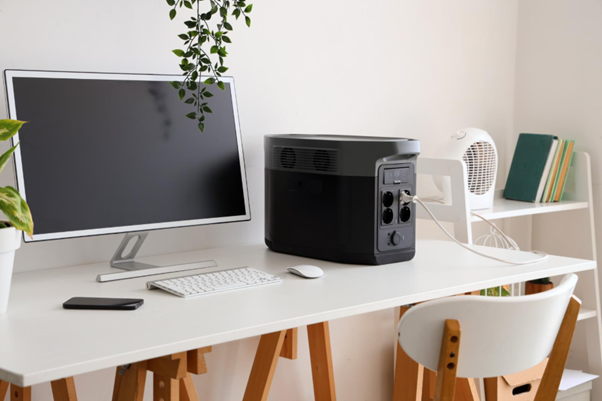Comparing Different UPS Types for South African Homes
With Eskom’s ongoing load-shedding and voltage instability, South African households increasingly rely on Uninterruptible Power Supply (UPS) systems to keep Wi-Fi routers, LED TVs, alarm panels and medical devices running. Yet, the local market is flooded with options—from R800 “plug-and-play” mini-UPS bricks to sophisticated, rack-mounted double-conversion units. Selecting the wrong type can lead to premature battery failure, damaged electronics or even electrical fires. This article compares the main UPS architectures available to South African consumers, examines their pros and cons in the context of local grid conditions, and offers practical guidance on sizing, installation and maintenance.
Why a UPS Is Critical in South Africa
Grid Challenges
- Load-shedding: Stage 2–6 blackouts lasting 2–4 h, often several times a day.
- Voltage sags & surges: Re-energising feeders can spike to 260 V or dip below 180 V.
- Frequency fluctuations: Operating at 49–51 Hz stresses sensitive electronics.
Household Impact
- Router downtime kills work-from-home productivity.
• Security systems reboot, leaving properties vulnerable.
• CPAP machines and nebulisers risk patient health during outages.
Regulatory & Safety Framework
South African National Standards (SANS)
- SANS 10142-1 (Wiring Code) governs fixed installations; UPS hard-wired into DB board must comply.
• SANS 60950/IEC 62368 apply to IT and audio-visual equipment safety.
National Regulator for Compulsory Specifications (NRCS)
- Enforces electro-magnetic compatibility (EMC) and plug-top approvals (VC 8055, VC 9037).
Consumer Protection Act (CPA)
- Requires clear labelling on battery chemistry, runtime and warranty—important when online purchases lack after-sales support.
Core UPS Architectures
Offline / Standby UPS
How It Works
- Normal mode: Utility power feeds load directly while charging battery.
• Outage mode: Inverter switches on within 4–10 ms, powering load.
Pros
- Lowest cost (R800–R3 000).
• High efficiency (>97 %) in standby; minimal heat.
• Compact; ideal for a single PC or fibre router (<300 W).
Cons
- Switch-over gap may reboot some PS4 consoles and older routers.
• Limited surge suppression; vulnerable to Eskom voltage spikes.
• Generally quasi-square-wave output—can stress active-PFC power supplies.
Best For
- Budget-conscious users protecting non-critical electronics (e.g., DSTV decoder).
Line-Interactive UPS
How It Works
- Adds an automatic voltage regulator (AVR) that boosts or bucks voltage without switching to battery.
• Transfer time 2–4 ms.
Pros
- Handles ±25 % mains fluctuation—essential during brownouts.
• Sine-wave variants increasingly affordable (R2 500–R8 000).
• Good balance between price and protection.
Cons
- AVR can’t correct frequency shifts; still some transfer delay.
• Fan noise present in larger (>1 kVA) towers; may annoy bedroom users.
Best For
- Home offices with PCs, monitors, printers up to 800 W; short load-shedding stages.
Online Double-Conversion UPS
How It Works
- AC → DC → AC conversion runs continuously, isolating load from mains.
• Zero transfer time; pure sine wave at tightly regulated 230 V ±1 %.
Pros
- Ultimate protection from surges, harmonics, frequency drift.
• Scalability: rack/tower models 1–10 kVA support entire home circuits.
• Works seamlessly with generators and solar inverters.
Cons
- Highest cost (R10 000–R60 000).
• Lower efficiency (87–93 %) means more heat and electricity usage.
• Requires proper ventilation; often necessitates hard-wiring by a qualified electrician (registered per ECB).
Best For
- Critical medical equipment, high-end gaming rigs, VOIP servers, smart-home hubs, or households integrating with rooftop solar plus generator.
Battery Chemistry Options
Sealed Lead-Acid (SLA / VRLA)
- Cheap, readily available.
• 200–300 cycles at 50 % depth of discharge (DoD).
• Degrades rapidly >25 °C—problem in Gauteng summers and enclosed cabinets.
Lithium-Iron-Phosphate (LiFePO₄)
- 2 000–4 000 cycles at 80 % DoD.
• Weight-for-weight stores 2–3× energy of SLA.
• Higher upfront cost but lower rand-per-cycle.
• Built-in BMS (Battery Management System) required; ensure SABS approval to avoid fire risk.
Nickel-Cadmium (NiCd) & Nickel-Metal Hydride (NiMH)
- Rare in consumer UPS; environmentally challenging disposal; usually skipped.
Sizing Your Home UPS
Step-by-Step Load Calculation
- List critical devices:
• Fibre ONT (15 W)
• Wi-Fi router (12 W)
• 55″ LED TV (120 W)
• Decoder / streaming box (25 W)
• Laptop charger (65 W)
Total = 237 W - Runtime target: 4 h (typical Stage 4 outage).
- Energy needed = 237 W × 4 h ≈ 950 Wh.
- Factor inverter efficiency (0.85) → 950 Wh / 0.85 ≈ 1 120 Wh battery.
- Battery bank size examples:
• SLA: 12 V × 100 Ah = 1 200 Wh (actual usable 50 % DoD ≈ 600 Wh → need two 100 Ah strings).
• LiFePO₄: 12.8 V × 100 Ah = 1 280 Wh (usable 80 % DoD ≈ 1 020 Wh, meets requirement in single battery).
Inverter Rating
- Choose ≥1.5× load to handle start-up surges (TV backlights, router PoE).
• For 237 W, a 500 W–1 kVA unit suffices.
Installation & Maintenance Best Practices
Electrical Safety
- Use SABS-approved plugs (SANS 164-1, 3-pin).
• Do not daisy-chain multi-plug extensions; fire hazard.
• Hard-wired online UPS must be installed by a Registered Person (Wireman’s Licence) and CoC (Certificate of Compliance) issued.
Ventilation & Placement
- Keep 150 mm clearance around vents; SLA batteries off cold tile floors reduce thermal runaway risk.
• Avoid direct sunlight; Li-ion BMS may cut off above 55 °C.
Routine Checks
- Monthly: Visual inspection for swelling, corrosion.
• Quarterly: Run a full discharge test until low-battery alarm then recharge; logs help predict end-of-life.
• Biennial: Replace SLA batteries (sooner if frequent Stage 6 events).
End-of-Life Disposal
- Lead-acid: Return to scrap dealers (≈R8/kg rebate) or accredited recyclers.
• Lithium: Take to e-waste collection points (e.g., Oricol, Drop-off depots); never bin—risk landfill fires.
Future Trends in Home UPS Solutions
Hybrid Inverter-UPS Units
- Seamlessly integrate solar PV, grid and battery in one chassis; eligible for SARS solar tax rebate (25 % on panels).
Super-Capacitor UPS
- Instantaneous transfer time (microseconds) with million-cycle lifespan; presently niche and pricey but promising for routers.
Smart IoT Monitoring
- Wi-Fi/Bluetooth apps provide SOC (state of charge), temperature, and cycle count; integrates with Home Assistant, enabling automated load-shedding shedding of non-essential circuits.
Sodium-Ion Batteries
- Emerging chemistry using abundant Na; projected cost 30 % lower than Li-ion; good high-temperature performance—perfect for SA climate.
Conclusion
Selecting the right UPS for a South African home involves more than price tags and wattage stickers. Offline models may suffice for a single router, but the country’s severe load-shedding, voltage irregularities and long outage durations often justify the extra investment in line-interactive or online double-conversion units—especially when paired with durable LiFePO₄ batteries. Adhering to SANS wiring codes, conducting realistic load audits, and performing regular maintenance will ensure your UPS delivers silent, reliable power when the grid goes dark, protecting both family comfort and essential electronics.






